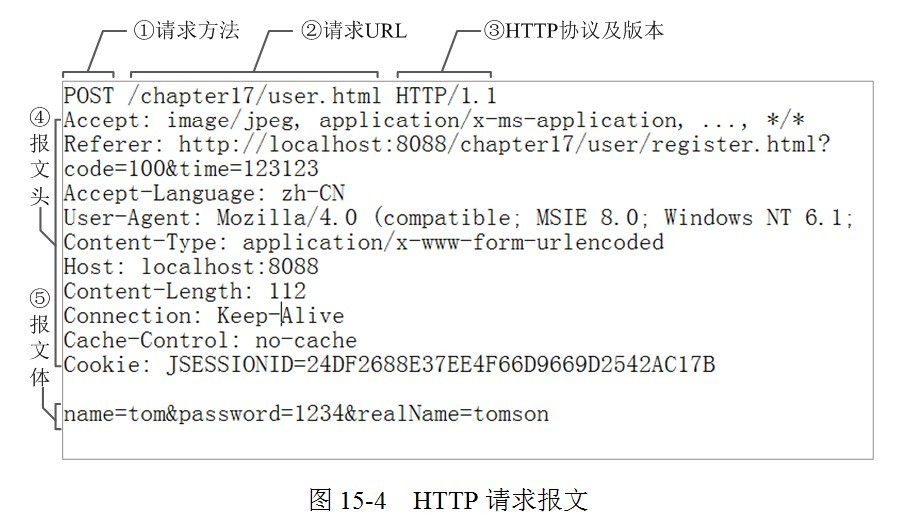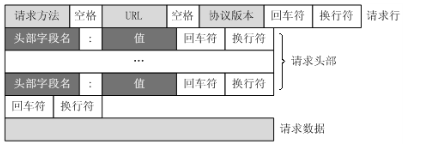@CrossOrigin(origins="*.a.cn"):跨域
@PreRemove:删除前,还有更新前等等
mybatis -> entity
@Tableid:自增
@TableField(exist = false):不验证
@NotEmpty(groups = Save.class):指定方法验证
@Lob
@JsonValue
@JsonIgnore 此注解用于属性上,作用是进行JSON操作时忽略该属性。
@JsonFormat 此注解用于属性上,作用是把Date类型直接转化为想要的格式,如@JsonFormat(pattern = “yyyy-MM-dd HH-mm-ss”)。
@JsonProperty 此注解用于属性上,作用是把该属性的名称序列化为另外一个名称,如把trueName属性序列化为name,@JsonProperty(“name”)。
@PathVariable
@GetMapping("/detail/{promotionId}")
public String detail(@PathVariable Long promotionId, ModelMap model) {
取占位符值
@JsonView:不同方法返回不同的值
@ModelAttribute:返回前先调用这个方法,增加返回参数时可以使用
@IgnoreAuth:忽略权限
1、@Autowired是spring自带的,@Inject是JSR330规范实现的,@Resource是JSR250规范实现的,需要导入不同的包
2、@Autowired、@Inject用法基本一样,不同的是@Autowired有一个request属性
3、@Autowired、@Inject是默认按照类型匹配的,@Resource是按照名称匹配的
4、@Autowired如果需要按照名称匹配需要和@Qualifier一起使用,@Inject和@Name一起使用

lombok@Data:生成getter,setter ,toString等函数
lombok@Builder:生成任意组合参数的构造方法(使用构造者模式实现)
lombok@NoArgsConstructor:生成无参构造函数
lombok@AllArgsConstructor:解决Builder和NoArgsConstructor冲突
lombok@Slf4j
private final Logger logger = LoggerFactory.getLogger(当前类名.class);
Feign@FeignClient(name = "user-service",contextId = "user-service-BusinessObjectFieldsService")
feign注解,feign调用注册中心名字为user-service的服务对应同名同参方法,contexid防止名字重复的别名
spring@Component(value="")
@Controller控制层@Service()@Repository持久层
配置在类或接口上,相当于<bean id="userAnnonMapper" class="com.spring.mapper.UserAnnonMapperImpl"></bean>,注解Value属性:相当于bean标签id,对象在IOC容器中的唯一标识,可以不写,默认值是当前类
首字母缩写的类名。注入时需要注意此名称
spring@RequestMapping(path = "/businessObjectFields/list", method = RequestMethod.POST)
mapping映射路径
HTTP请求报文解剖
form表单中enctype 属性可以设置下面三种
Http Header里的Content-Type一般有这三种:
- application/x-www-form-urlencoded:数据被编码为名称/值对。这是标准的编码格式。
- multipart/form-data: 数据被编码为一条消息,页上的每个控件对应消息中的一个部分。
- text/plain: 数据以纯文本形式(text/json/xml/html)进行编码,其中不含任何控件或格式字符。postman软件里标的是RAW。
2.请求头部
请求头部是 字段名:值 的格式展现
用于HTTP请求中的常用请求头字段
Accept: 用于高速服务器,客户机支持的数据类型
Accept-Charset: 用于告诉服务器,客户机采用的编码格式
Accept-Encoding:用于告诉服务器,客户机支持的数据压缩格式
Accept-Language:客户机的语言环境
Host: 客户机通过这个头高速服务器,想访问的主机名
If-Modified-Since:客户机通过这个头告诉服务器,资源的缓存时间
Referer: 客户机通过这个头告诉服务器,它是从哪个资源来访问服务器的(防盗链)
User-Agent: 客户机通过这个头告诉服务器,客户机的软件环境
Cookie: 客户机通过这个头可以向服务器带数据
Connection: 处理完这次请求后是否断开连接还是继续保持连接
Date: 当前时间值
2.响应头
响应头通常也是由 字段名:值 组成
响应头用于描述服务器的基本信息,以及数据的描述,服务器通过这些数据的描述信息,可以通知客户端如何处理等一会儿它回送的数据。
常见的响应头字段:
Location: 这个头配合302状态码使用,用于告诉客户找谁。
Server: 服务器通过这个头告诉浏览器服务器的类型。
Content-Encoding: 服务器通过这个头告诉浏览器数据的压缩格式。
Content-Length: 服务器通过这个头告诉浏览器回送数据的长度
Content-Type: 服务器通过这个头告诉浏览器回送数据的类型
Last-Modified: 告诉浏览器当前资源的最后缓存时间
Refresh: 告诉浏览器隔多久刷新一次
Content-Disposition:告诉浏览器以下载方式打开数据
Transfer-Encoding: 告诉浏览器数据的传送格式
ETag: 缓存相关的头



spring@RequestBody
PageInfo<BusinessObjectFields> queryByPage(@RequestBody BusinessObjectFieldsDTO businessObjectFieldsDTO);
接收报文体参数
spring@RequestParam
spring@RequestParam有三个配置参数:
required表示是否必须,默认为true,必须。defaultValue可设置请求参数的默认值。value为接收url的参数名(相当于key值)。
可以接受报文头参数和报文体为 application/x-www-form-urlencoded的参数
spring@Aspect(配合@Component才有作用)
切面雷
spring@Pointcut("(execution(* com.dawdler.user.controller.business.*.*(..) ))")
切入点
spring@Around(value = "pointcut()")
环切
public Object aroundMethod(ProceedingJoinPoint pdj) throws Throwable {
String className = pdj.getTarget().getClass().getName();
String methodName = pdj.getSignature().getName();
Stopwatch otaWatch = Stopwatch.createStarted();
result = pdj.proceed();//执行
otaWatch.stop();//计时器
jdk@Retention(RetentionPolicy.RUNTIME)
jdk@Target({ElementType.METHOD})
jdk@Inherited
jdk@Documented
jdk原注解,创建注解用
1.RetentionPolicy.SOURCE —— 这种类型的Annotations只在源代码级别保留,编译时就会被忽略
2.RetentionPolicy.CLASS —— 这种类型的Annotations编译时被保留,在class文件中存在,但JVM将会忽略
3.RetentionPolicy.RUNTIME —— 这种类型的Annotations将被JVM保留,所以他们能在运行时被JVM或其他使用反射机制的代码所读取和使用.
Documented 注解表明这个注解应该被 javadoc工具记录
@Inherited注解的子类自动继承父类
取类注解方法
public void setAnnotatioinFieldValue(String className, String methodName, String annoName, String fieldName, String fieldValue) throws NotFoundException {
ClassPool classPool = ClassPool.getDefault();
CtClass ct = classPool.get(className);
CtMethod ctMethod = ct.getDeclaredMethod(methodName);
MethodInfo methodInfo = ctMethod.getMethodInfo();
ConstPool constPool = methodInfo.getConstPool();
AnnotationsAttribute attr = (AnnotationsAttribute) methodInfo.getAttribute(AnnotationsAttribute.visibleTag);
Annotation annotation = attr.getAnnotation(annoName);
if (annotation != null) {
annotation.addMemberValue(fieldName, new StringMemberValue(fieldValue, constPool));
attr.setAnnotation(annotation);
methodInfo.addAttribute(attr);
}
}
swagger@Api("业务对象管理")
@ApiOperation(value = "fieldCombinationRuleList", nickname = "条件关系值下拉框", notes = "条件关系值下拉框")
@ApiResponses({@ApiResponse(code = 404, response = String.class, message = "接口不存在"),
@ApiResponse(code = 500, response = String.class, message = "程序错误")})
使用在类上,表明是swagger资源,@API拥有两个属性:value、tags
生成的api文档会根据tags分类,直白的说就是这个controller中的所有接口生成的接口文档都会在tags这个list下;tags如果有多个值,会生成多个list,每个list都显示所有接口
swagger@ApiOperation
使用于在方法上,表示一个http请求的操作
源码中属性太多,记几个比较常用
value用于方法描述
notes用于提示内容
tags可以重新分组(视情况而用)
swagger@ApiParam
使用在方法上或者参数上,字段说明;表示对参数的添加元数据(说明或是否必填等)
name–参数名
value–参数说明
required–是否必填
swagger@ApiModel()
使用在类上,表示对类进行说明,用于参数用实体类接收
value–表示对象名
description–描述
swagger@ApiModelProperty()
使用在方法,字段上,表示对model属性的说明或者数据操作更改
value–字段说明
name–重写属性名字
dataType–重写属性类型
required–是否必填
example–举例说明
hidden–隐藏
@ResponseBody
@responseBody注解的作用是将controller的方法返回的对象通过适当的转换器转换为指定的格式之后,写入到response对象的body区,通常用来返回JSON数据或者是XML数据。
注意:在使用此注解之后不会再走视图处理器,而是直接将数据写入到输入流中,他的效果等同于通过response对象输出指定格式的数据。
原文链接:https://blog.csdn.net/originations/article/details/89492884
spring@RestController
@Controller+@ResponseBody
@RestController
public class BusinessObjectController {
Spring Cloud@EnableDiscoveryClient
eureka@EnableEurekaClient
开启服务注册
@EnableDiscoveryClient
public class UserControllerApplication
spring@Autowired
自动注入
@Autowired
private BusinessObjectService businessObjectService;
spring@Validated
家在验证的BEAN,开启验证
public Result<PageInfo<BusinessObject>> list(@Validated @NotNull @RequestBody BusinessObjectQueryParam businessObjectQueryParam) {
然后在BEAN对应字段上加如下注解

spring@ControllerAdvice 三个功能:
@ControllerAdvice
class GlobalControllerExceptionHandler
- 全局异常处理
- 全局数据绑定
- 全局数据预处理@ExceptionHandler
@ExceptionHandler
返回值支持ModelAndView,@ResponseBody等多种形式.
@ResponseStatus(HttpStatus.OK)
指定返回码,异常是也可以返回200
@ResponseBody
Result handleException(MethodArgumentNotValidException ex) {
log.debug("Validate Exception.", ex);
List<String> messageList = Stream.concat(
ex.getBindingResult()
.getFieldErrors()
.stream()
.map(i -> i.getField() + ": " + i.getDefaultMessage()),
ex.getBindingResult()
.getGlobalErrors()
.stream()
.map(i -> i.getObjectName() + ": " + i.getDefaultMessage()))
.sorted(String::compareTo)
.collect(Collectors.toList());
String message = StringUtils.join(messageList, ", ");
return Result.failure(ResponseState.RESPONSE_SYSTEM_ERROR.code, message);
}
@ExceptionHandler(value = {AcException.class})
@ResponseStatus(HttpStatus.INTERNAL_SERVER_ERROR)
@ResponseBody
Result handleException(AcException ex,String msg) {
log.error("HttpMessageNotReadableException Error: context:{}", RequestContextHolder.context(), ex);
return Result.failure(ResponseState.RESPONSE_SYSTEM_ERROR.code, msg);
}
AcException为自定义异常,继承异常类throw new AcException
spring@Value("${debug}")
取配置文件值
spring@Configuration
spring@bean
配置文件,配合使用
swagger@EnableSwagger2
swagger配置文件
@Configuration
public class SwaggerConfig {
@Bean
public Docket createRestApi() {
return new Docket(DocumentationType.SWAGGER_2)
.groupName("")
.apiInfo(getApiInfo())
.select()
.apis(RequestHandlerSelectors.basePackage("com.dawdler.user.controller.business"))
.paths(PathSelectors.any())
.build();
}
private ApiInfo getApiInfo() {
return new ApiInfoBuilder()
.title("ac基础架构平台")
.description("ac基础架构平台")
.version("v1.0")
.termsOfServiceUrl("**")
.contact(new Contact(
"ac基础架构平台",
"**",
"chenyongke@accenture.com"))
.build();
}
spring@Profile
数据源:(/dev) (/test) (/master)指定组件在哪个环境下注入
spring@ConditionalOnProperty
通过@ConditionalOnProperty控制配置类是否生效,可以将配置与代码进行分离,实现了更好的控制配置.
@ConditionalOnProperty实现是通过havingValue与配置文件中的值对比,返回为true则配置类生效,反之失效.
filter.loginFilter=true
@ConditionalOnProperty(prefix = "filter",name = "loginFilter",havingValue = "true")
spring@Override
重写父类
spring boot@SpringBootApplication
spring boot启动类
@SpringBootApplication(scanBasePackages = {
"com.dawdler.user.controller.business",
"com.dawdler.user.controller.annotation",
"com.dawdler.user.controller.exception",
"com.dawdler.user.controller.swagger",
"com.dawdler.user.listener",
"com.anywide.dawdler.clientplug.web.session"},
@ComponentScan
这个注解在Spring中很重要,它对应XML配置中的元素,@ComponentScan的功能其实就是自动扫描并加载符合条件的组件(比如@Component和@Repository等)或者bean定义,最终将这些bean定义加载到IoC容器中。
我们可以通过basePackages等属性来细粒度的定制@ComponentScan自动扫描的范围,如果不指定,则默认Spring框架实现会从声明@ComponentScan所在类的package进行扫描。
例如,如果你有个类用@Controller注解标识了,那么,如果不加上@ComponentScan,自动扫描该controller,那么该Controller就不会被spring扫描到,更不会装入spring容器中,因此你配置的这个Controller也没有意义。
basePackageClasses:对basepackages()指定扫描注释组件包类型安全的替代。
excludeFilters:指定不适合组件扫描的类型。
includeFilters:指定哪些类型有资格用于组件扫描。
lazyInit:指定是否应注册扫描的beans为lazy初始化。
nameGenerator:用于在Spring容器中的检测到的组件命名。
resourcePattern:控制可用于组件检测的类文件。
scopedProxy:指出代理是否应该对检测元件产生,在使用过程中会在代理风格时尚的范围是必要的。
scopeResolver:用于解决检测到的组件的范围。
useDefaultFilters:指示是否自动检测类的注释
@EnableAspectJAutoProxy
开启切面
@EnableFeignClients(basePackages = {"com.dawdler.user.service"})
开启eign
@Transactional
开启事务
mybatis@Mapper
mapper对应的类
mybatis@MapperScan(basePackages = {"com.dawdler.user.service.mapper"})
加在启动类上,指定包下全部生成,相当于@Mappe
mybatis@Param("queryDTO")
注意此时并不需要写出parameterType属性,Mybatis会进行自动搜索。
@ServletComponentScan
在启动类上使用@ServletComponentScan注解后,Servlet、Filter、Listener可以直接通过@WebServlet、@WebFilter、@WebListener注解自动注册,无需其他代码。
@EnableTransactionManagement
在启动类上使用开启事务
@EnableScheduling
在启动类上使用开启定时器
@EnableCaching
在启动类上使用开启定时器开启缓存
Spring自身已经为我们提供了两种CacheManager的实现,一种是基于Java API的ConcurrentMap,另一种是基于第三方Cache实现——Ehcache,如果我们需要使用其它类型的缓存时,我们可以自己来实现Spring的CacheManager接口或AbstractCacheManager抽象类。
@Cacheable(value={"users"}, key="#user.id", condition="#user.id%2==0")
@CachePut("users")//每次都会执行方法,并将结果存入指定的缓存中
@CacheEvict
beforeInvocation属性
清除操作默认是在对应方法成功执行之后触发的,即方法如果因为抛出异常而未能成功返回时也不会触发清除操作。使用beforeInvocation可以改变触发清除操作的时间,当我们指定该属性值为true时,Spring会在调用该方法之前清除缓存中的指定元素。
@CacheEvict(value="users", beforeInvocation=true)
allEntries是boolean类型,表示是否需要清除缓存中的所有元素。默认为false,表示不需要。当指定了allEntries为true时,Spring Cache将忽略指定的key。有的时候我们需要Cache一下清除所有的元素,这比一个一个清除元素更有效率。
@CacheEvict(value="users", allEntries=true)
@Caching
@Caching注解可以让我们在一个方法或者类上同时指定多个Spring Cache相关的注解。其拥有三个属性:cacheable、put和evict,分别用于指定@Cacheable、@CachePut和@CacheEvict。
@Caching(cacheable = @Cacheable("users"), evict = { @CacheEvict("cache2"),
@CacheEvict(value = "cache3", allEntries = true) })
Spring允许我们在配置可缓存的方法时使用自定义的注解,前提是自定义的注解上必须使用对应的注解进行标注。如我们有如下这么一个使用@Cacheable进行标注的自定义注解。
@Target({ElementType.TYPE, ElementType.METHOD})
@Retention(RetentionPolicy.RUNTIME)
@Cacheable(value="users")
public @interface MyCacheable {
}
@SuppressWarnings("unchecked")
忽略警告






















 130
130











 被折叠的 条评论
为什么被折叠?
被折叠的 条评论
为什么被折叠?








